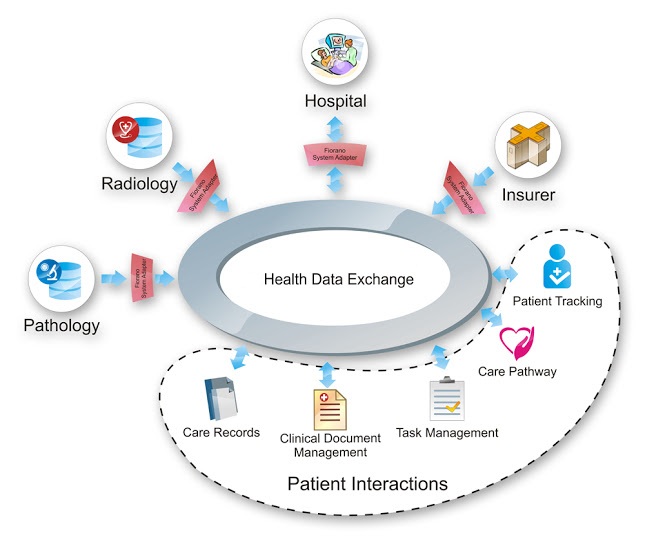Implementing electronic dataexchange in healthcare industry can not only improve the patient care infrastructure to cope with the evolving need of the patients and the doctors, but also help in meeting the expectations of the tech-savvy younger generations who prefer electronic healthcare services.
Moreover, with Electronic Medical Records (EMR) globally accepted as an essential in modernizing clinical healthcare, the demand for healthcare data exchange is also on the rise. So, it’s time to stop providing paper-based medical services and embrace the technology, which will lead us to a greener future.
Healthcare Data Exchange – What is it?
Healthcare data exchange, formally termed as Health Information Exchange (HIE), is a mode of sharing patient data and clinical information electronically over a secure platform using a standardized documentation format.
Electronic data exchange combined with Electronic Health Records (EHR), enables easier storage, organization, tracking, and analysis of patient data and speed up decision making in the treatment process. Precisely, it can significantly improve the quality of patient-care service.
Advantages of HIE
By adopting HIE medical institutes; laboratories, and clinics can reap multifarious benefits for both patients and doctors.
- Accelerates information exchange with improved accuracy –Whether it is replying to a patient query or exchanging patient data between the two branches of the healthcare provider, information can be shared in seconds. With automatic verification for data fields there is very little chance of errors in reports.
- Increases patient involvement and awareness –Patients can access and check their clinical reports and personal health records online by logging into the portal. It also opens up a channel of communication between the patient and the healthcare provider, as appointments can be scheduled electronically and patients’ queries can be replied through emails.
- Improves diagnosis and treatment –While EHR ensures accuracy and transparency in patient information, HIE speeds up the process of secure data sharing between two remotely located healthcare centers for better treatment and decision support.
- Eliminates duplicate treatment and patient data – HIE enables coordinated patient care and thereby reduces the chances of duplicate treatment for a patient who is moving to another city/location for some reasons. With electronic health information exchange the patient’s existing medical history, treatment records, and reports can easily be transferred through the trusted network of the healthcare provider, so that the patient can access it in his new location and doesn’t have to start the treatment from the beginning in the new city.
- Reduces operational costs-With paper-based reporting and information sharing by post the cost of operation was high. With HIE care providers can eliminate that expense.
Things to Check with Healthcare Data Exchange
The patient consent in sharing his/her clinical data is a crucial factor in Health Information Exchange (HIE). This type of data exchange must comply with the related federal laws including the Health Insurance Portability and Accountability Act (HIPAA) of 1996.
There are two ways of obtaining patient’s consent, and these are Opt-in and Opt-out. In Opt-in method, the patient’s explicit consent is sought via the patient’s written application to join the provider’s HIE program. On the contrary, in Opt-out method, the patient is enrolled for HIE program automatically at the time of registration with the service provider. However, the patient can opt-out of the program whenever he/she wants by submitting a written request for the same.
This article has been shared by Joseph Macwan working with Aegis HealthTech as senior developer from couple of years. He has extensive experience in Patient Portal Software Development, Implementation and Integration.

